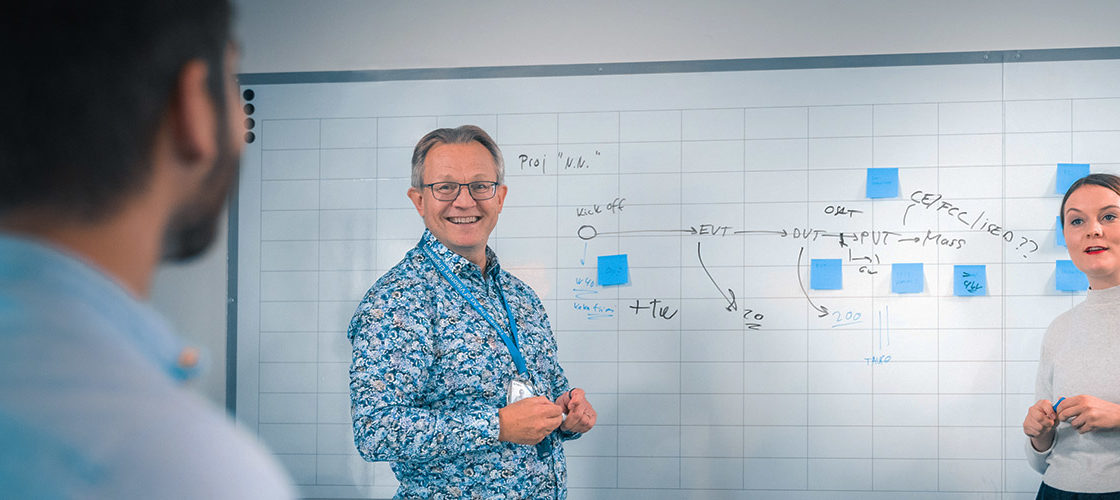You have created a product (or you are thinking about it) and now you are wondering what if someone steals it or benefits from it? In this article, I go through the basics of patenting an idea and what you can do to prevent this from happening.
Let’s start with the basics: It is not possible to patent an idea. An idea is not tangible and simply it is not possible to patent it.
However, as your idea grows into an invention, it might start to fulfil the requirements of a patent. It is possible that it is going to be in high demand after its launch, and therefore attract other creators to copy it. It makes sense to protect your own innovation with a patent as it protects your invention.
Getting a patent is a detailed process and varies between countries. In this article, we cover the basics of how to patent an idea. To get more country-specific patenting information, contact your local authorities, such as Finnish Patent and Registration Office, PRH.
What is a patent?
You can see a patent as a recognition of an invention. More specifically a patent is an exclusive right that provides you with the right to prohibit others from utilizing your invention commercially. This means for example manufacturing, selling, using or importing a product.
However, having a patent does not automatically give the patent owner the right to utilize the invention commercially, as permits granted by other authorities or by owners of other patents might be needed.
Patents are usually in force for a limited amount of time, for example, 20 years.
How to patent an idea?
Here are five general steps you need to follow to get your innovation patented:
Make sure the invention is eligible
Not everything can be patented. These requirements might vary between the countries you are applying for the patents, but there are some general guidelines on whether your idea or invention is eligible.
- The patent must be novel and non-obvious, meaning the invention must be completely new. It is not eligible if it has been patented or even described in a patent.
- The idea for the innovation cannot be too abstract or vague. The innovation must have a real-world use case.
- Natural discoveries are not patentable.
- Finally, the use of the patent must be well-defined and non-speculative.
Record everything in the process
If your idea for innovation is eligible, then you can move forward. Simply having an idea is not enough for a patent.
Therefore, recording everything is very important in pursuing a patent. The entire thought process should be documented on paper, with any other evidence you might have to prove your invention is eligible for a patent. These can be anything from raw notes to sketches, and mistakes made during the creation process.
Having a documented process helps you defend your patent application, while also helping you prove that the idea and thus the invention is completely new and yours. Getting the documents signed with witnesses can help but be careful that the correct NDAs are in place.
Create a prototype
Creating a prototype of your invention while filing for a patent is highly recommended. A prototype of your invention showcases all the features you have described in your documentation.
Having your invention as something tangible helps you with two things: First, it might help you discover any issues with the design, allowing for you to fix them before filing for the final patent. Secondly, creating a prototype means you have something to show to your investors and licensees.
Prepare for the patent application
If all goes well, and you get all the previous steps done in the process, you can start preparing a patent application. There are three main things to the outcome: cost, patent type and the potential of creating a provisional patent application.
The cost of a patent application can surprise, as it can range up to $16000 for a complicated software patent. This doesn’t include the potential fees of your patent lawyer. Note that using a patent lawyer reduces the risk of spending time and money for a patent that then doesn’t get accepted.
They can also help you with choosing between the patent types (explained later in this article), and whether you should apply for a provisional patent. Having a registered attorney or agent is officially recommended by the USPTO.
File for the patent
If you have done everything in the process correctly, you will be ready to file a patent application. The actual filing process depends on the market you are applying for the patent in, for example, the process in the US is described here.
Why patent an idea?
There are a lot of reasons why you should patent your invention. It is part of your company’s business plan and it protects the company from copycats and from losing market share.
Three main reasons to patent your invention are:
You restrict your competitors’ operations:
- A patent gives you an exclusive right to your own product
- Having a patent gives you an advantage over your competitors and you gain time to develop your product further
- Your competition needs to invest a lot of money to come up with other solutions if they want to enter the same market
A patent is viewed as property:
- You can sell your patent
- Licensing someone to commercially use the patented invention against payment
- You can freely price your patented products – depending on your product strategy it can be lower or higher than the competition
A patent has an advertising and image value:
- Patenting gives the impression of a high-tech company
- A patent may boost your sales
What are the requirements of a patent?
As a recap, there are three main elements that need to be filled for your invention to be patented:
- The invention must be new
An invention must be new in relation to what was public knowledge before the date of filing the patent application. It is best not to unveil the invention before the patent application is filed.
- It needs to involve an inventive step
The invention must involve an inventive step to be judged substantially different from all that was public knowledge before the first date of the application.
- The invention must be industrially applicable
To be a patentable invention, it must be technological in nature, and the invention must solve a technical problem. The description of the invention in the patent application must include adequate information for a person skilled in the art in the relevant technical field to carry out the invention. The invention must also be repeatable.
What cannot be patented?
There are certain things you cannot patent:
- Discoveries, scientific theories and mathematical methods
- Aesthetic creations
- Schemes, rules and methods for performing mental acts, playing games or doing business
- Programs for computers, or presentations of information
- Methods for surgical or therapeutic treatment or diagnostic methods practised on humans or animals
Utility model vs patent
You can also get a utility model to protect your invention, similarly to a patent. So, when you should consider getting a utility model over a patent?
There are few use cases and benefits of a utility model over a patent.
A utility model allows a quicker way to register protection for your invention. Therefore, it is a good alternative for inventions which need a faster way of protection against competition. A utility model is also cheaper in terms of fees than a patent.
A patent and a utility model are equally protective against the competition. However, a utility model is not examined based on its novelty, unless specifically requested and paid.
A utility model is especially aimed at inventions which have lesser complexity and innovativeness. If you have a technical invention and you are unsure if it is worthy of a patent, it is possible that getting a utility model is the right choice.
In conclusion:
To conclude, you can not patent an idea. However, you can patent an innovation.
This article is part of a series on new product development. Now that you know about how to patent an idea, learn the rest here:
If you are looking for a product development partner, learn more about how Haltian can help:

New Product Development
Get 20+ years of engineering, product design and new product development experience into your team.
